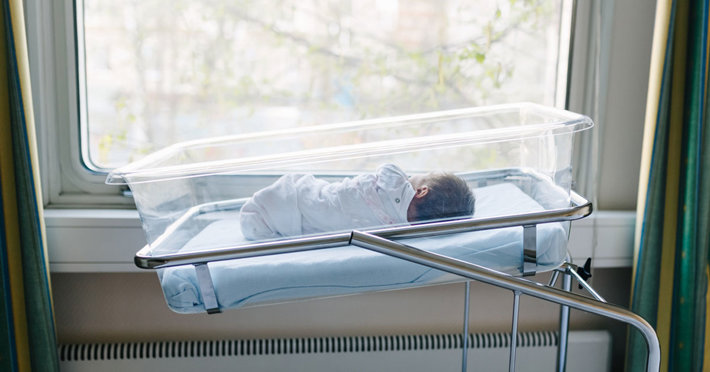Pregnancy, Drugs and Alcohol: Avoiding Drug-Related Birth Defects

Every year in America, 3.7 million babies are born. They’re born to families that are just starting out, big families and single parents. The vast majority of babies are born without birth defects but about 3% of babies suffer some type of defect. These defects are the number one cause of infant death and can, of course, cause a lifetime of suffering, depending on which type of defect occurs.
Some birth defects have no distinct cause other than possible genetic mutations. Others, however, are preventable. Many types of birth defects have been traced to the mother’s use of illicit drugs or alcohol or her misuse of prescription drugs. Defects of this type are particularly tragic if a woman is trapped in addiction and does not receive the help she needs to stop using drugs or drinking. Both she and her child may suffer the consequences for many years.
In addition, some women may become pregnant and not realize it for weeks. In that time period, they may continue using drugs or drinking and thus unintentionally expose their unborn child to a higher risk of birth defects.
For these reasons, helping a pregnant woman (or even one of child-bearing age) get help for addiction is essential.
Which Illicit Drugs Are Associated with Birth Defects?
While the results of research and studies vary, evidence can be easily found to link the following drugs with birth defects.
Cannabis
- Shorter gestation
- Low birth weight
- Stillbirth
Heroin and other opioids
- Premature delivery
- Fetal death
- Premature rupture of membranes
- Limited growth of the fetus
- A blood infection in the mother that can cause brain damage or death in the fetus
- Heart defects
- Neural tube defects resulting in spinal bifida or anencephaly (missing parts of brain and skull)
Cocaine
- Premature delivery
- Placental detachment
- Fetal death
- Limited growth of the fetus
- Inflammation that results in a hole in the baby’s intestines
- Ears placed too low
- Eyes too far apart
- Multiple small strokes before birth
- Miscarriages
- Gastrointestinal deformity
Amphetamines/Methamphetamine
- Abnormally small head
- Shorter length
- Cleft lip and cleft palate
- Placental detachment
- Stillbirth
- Heart defects
- Fetal death
- Brain abnormalities
- Gastrointestinal deformity
Hallucinogens (PCP, LSD, MDMA, etc.)
- Respiratory abnormalities
- Cardiovascular defects
- Smaller heads, possibly with underdeveloped brains
- Abnormal motor functions
- Urinary tract deformities
Inhalants
- Small size
- Undersized head
- Joint or limb deformities
- Abnormal facial features,
- Heart defects.
Alcohol
Alcohol produces very well-known birth defects. One type of defect deserves special discussion: Fetal alcohol syndrome disorders or FASD. This term refers to a group of deformities or disabilities that occur in the babies of mothers who consumed alcohol during pregnancy.
This set of disorders or deformities is 100% preventable if a woman avoids alcohol use during pregnancy. A problem arises, of course, if a woman becomes pregnant without knowing it.
Signs of FASD
- Low body weight
- Slow growth after birth
- Poor coordination
- Heart or kidney problems
- Deformities of joints and fingers
- Vision or hearing disabilities
- Undersized head
- Abnormal facial features
Limb deformities can be a result of alcohol consumption during pregnancy but this condition is not always associated with FASD. Premature birth, miscarriage and stillbirth are also possible effects of alcohol consumption.
In the list above, I’ve only included physical deformities or deficiencies. Of course, many of these drugs also result in developmental or intellectual problems in the child.
Abused Prescription Drugs

Historically, there have been many prescription drugs that have been found to cause birth defects. This article will only include those pharmaceutical products that are commonly abused and that may be addictive and send a mother to rehab.
When a person misuses or abuses prescription drugs, they generally take more of these drugs than a doctor would prescribe or take them in ways not recommended by a doctor. For example, they might snort or inject a drug that would normally be swallowed in pill form. Thus their risk of birth defects might be higher than if a woman used these drugs in the way recommended by their doctor.
Birth defects resulting from prescription drugs are also sometimes limited to the use of that drug during a particular phase of pregnancy, for example, first trimester or last trimester.
Benzodiazepams (Valiam, Xanax, diazepam, etc.)
- Cleft palate
- Cleft lip
- Miscarriage
Barbiturates (sleeping pills)
- Bleeding problems in the baby
- Breathing problems
Opioid Pain Relievers (oxycodone, hydrocodone, methadone, etc.)
- Stillbirth
- Cleft palate
- Cleft lip
- Heart defects
- Clubfoot
- Spina bifida
- Digestive deformities
Prescription Stimulants (Ritalin, Adderall, etc.)
- Limb deformities
- Digestive and abdominal deformities
It’s not hard to come to a few conclusions about how to prevent the risk of birth defects. For women of child-bearing age, avoid any drug abuse. If there is any chance you could become pregnant, avoid alcohol. If you must drink, monitor the possibility that you could become pregnant.
And above all, for any woman who can’t control her drug or alcohol use, get her help. When she achieves stable sobriety, you could not only save her life, you could save the life of her future baby.
Sources:
- https://www.semanticscholar.org/paper/Teratogenic-risks-from-exposure-to-illicit-drugs.-Holbrook-Rayburn/392dd5cb5affc84aa6ea5850f37cf419da62a69c/figure/0
- https://my.clevelandclinic.org/health/diseases/15032-anencephaly
- https://www.latimes.com/archives/la-xpm-1985-12-05-me-446-story.html
- https://dmh.lacounty.gov/our-services/employment-education/education/drugs-pregnancy/
- https://www.misd.net/earlyon/files/Prental%20Drug%20Exposure%20Tool%20Kit.pdf
- https://my.clevelandclinic.org/health/diseases/10026-necrotizing-enterocolitis
- https://www.cdc.gov/birth-defects/about/limb-reduction-defects.html
- https://www.cdc.gov/ncbddd/fasd/facts.html
- https://www.mayoclinic.org/diseases-conditions/fetal-alcohol-syndrome/symptoms-causes/syc-20352901
- https://www.mayoclinic.org/drugs-supplements/barbiturate-oral-route-parenteral-route-rectal-route/before-using/drg-20069290
- https://www.drugabuse.gov/publications/research-reports/methamphetamine/what-are-risks-methamphetamine-misuse-during-pregnancy
- https://pubmed.ncbi.nlm.nih.gov/18063593/
- https://www.drugabuse.gov/publications/research-reports/substance-use-in-women/substance-use-while-pregnant-breastfeeding
- https://pediatrics.aappublications.org/content/139/6/e20164131
- https://www.reuters.com/article/us-health-pregnancy-benzodiazepines/benzodiazepines-in-early-pregnancy-tied-to-heightened-risk-of-miscarriage-idUSKCN1SL2B0
- https://www.cdc.gov/medicine-and-pregnancy/about/index.html
- https://www.marchofdimes.org/pregnancy/alcohol-during-pregnancy.aspx


 ®
®